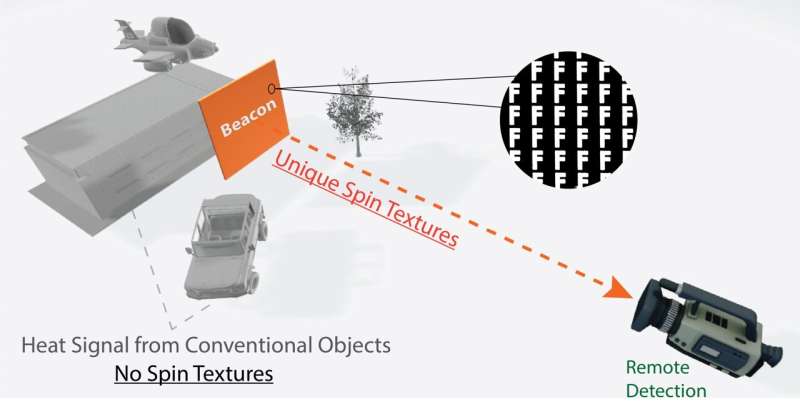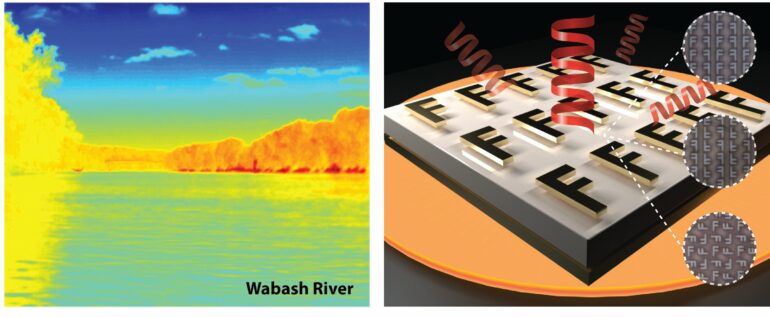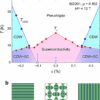Researchers at Purdue University have made a groundbreaking discovery in the field of thermal radiation, uncovering a new method for generating spinning thermal radiation in a controlled and efficient manner using artificially structured surfaces, known as metasurfaces.
The team, led by Zubin Jacob, Purdue’s Elmore Associate Professor of Electrical and Computer Engineering, has published findings in the journal Science Advances, titled “Observation of non-vanishing optical helicity in thermal radiation from symmetry-broken metasurfaces.”
Thermal radiation, which originates from random fluctuations in materials, is traditionally considered an incoherent signal. Most conventional thermal emitters show weak to zero circular polarization in the emitted heat. Surprisingly, the thermal radiation reaching the earth from many astronomical objects possesses significant circular polarization. This intriguing phenomenon leads to the discovery of strong magnetic fields in some condensed stars, offers explanations of puzzles about the early universe, and even provides a possible signature of life.
“Spinning thermal radiation is extremely rare in nature and is only found in some condensed stars,” Jacob said. “Our work provides a new way to generate this type of radiation, which has the potential to be used in a variety of applications, including thermal imaging and communication.”

The unique spin textures of the engineered thermal emission from our metasurfaces can be exploited as high-contrast infrared beacons in outdoor environments, as the background thermal emission from other natural objects is highly incoherent without any spin textures. © Purdue University/Xueji Wang
The researchers discovered that by using a metasurface made up of an array of F-shaped structures, they were able to generate predominantly left-handed circularly polarized thermal radiation in all directions, resulting in non-vanishing optical helicity for the first time.
The team reached 39% of the fundamental limit in optical helicity with their design, and they also showed that the characteristics of emitted thermal photons can be tailored by the symmetries of the metasurface, demonstrating effective control over thermal radiation in its various properties.
“This research could have important implications for understanding the omnipresent thermal radiation phenomenon and for developing new technologies,” Jacob said. Potential applications include using the metasurface as a wide-angle, narrow-band circular-polarized mid-infrared light source for optical gas sensing and infrared imaging. Additionally, the unique spectral, spatial, and spin feature of the engineered thermal emission can be exploited as passive infrared beacons in outdoor environments, making them useful in remote sensing technology.
“We are extremely excited about the potential of this discovery,” says Ph.D. student Xueji Wang. “Not only does it deepen our understanding of thermal radiation, but it also opens up new possibilities for technological advancements in a variety of fields.”
More information:
Xueji Wang et al, Observation of nonvanishing optical helicity in thermal radiation from symmetry-broken metasurfaces, Science Advances (2023). DOI: 10.1126/sciadv.ade4203
Citation:
Researchers uncover a new method for generating spinning thermal radiation (2023, February 3)



